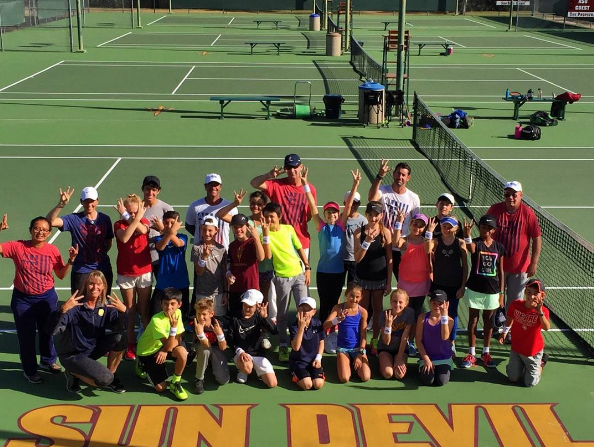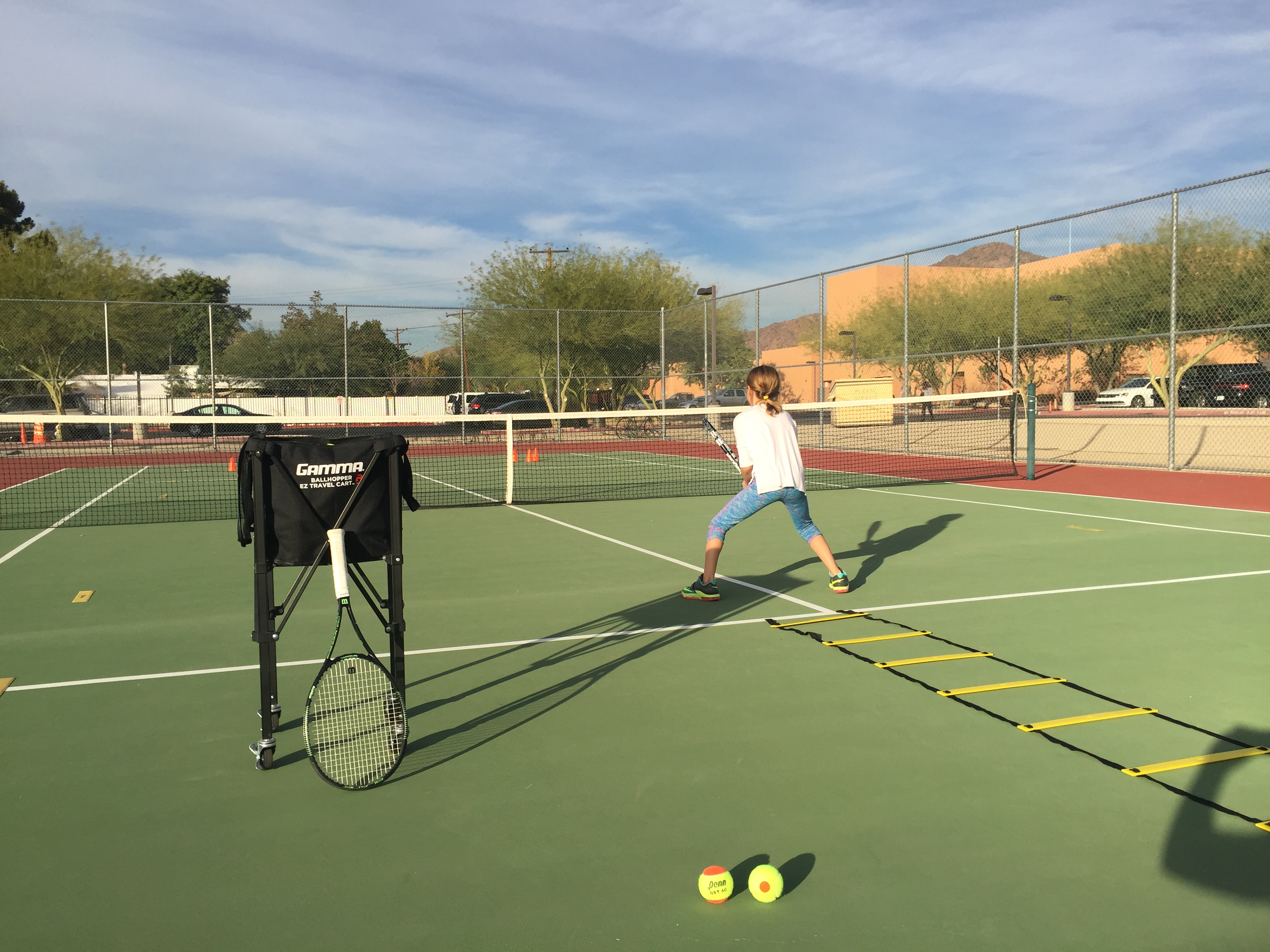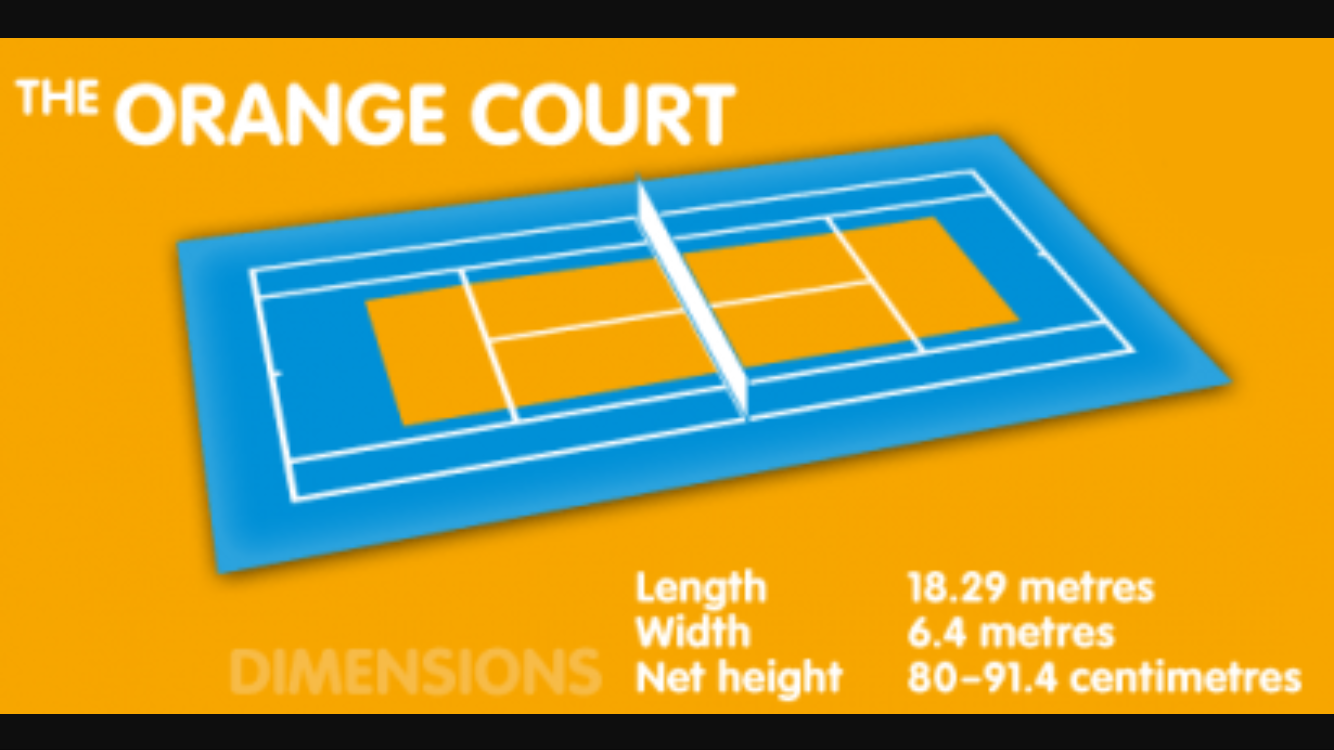|
This weekend, I had the opportunity to coach at the USTA Southwest Green Ball development camp held at Arizona State University. It was a fantastic venue for the aspiring tennis players to see where their tennis paths could lead to.
The Green phase is for players aged 10-12, played on a full-size court using low compression "Green Dot" balls. New Green Ballers are faced with the challenge of covering more court space and generating more racquet head speed to hit the ball farther. With the bigger court, ball recognition is an important development area during this phase. Recognizing the path, speed, and spin of the ball off of your opponent's racquet early will allow the player to make the appropriate adjustments to the shot. For example, recognizing a short ball early will allow the player to move up quickly, meet the ball, and make a more aggressive shot. The theme of our Green Ball camp was "Doubles Dominance." We worked on serves, volleys, movement patterns whilst positioned at the net, and recognizing a short ball to attack. Doubles is often overlooked in programs these days. It's not seen as glamorous or as important as singles. Doubles, however, reinfornces all of the foundations of a good player. You must be able to hit targets on your serve, and make precise returns to set up your partner or to keep the ball away from the opposing net player. Doubles is ideal for developing volley skills and net play, which are essential for finishing points (even in singles, where points cannot all be decided from the baseline). It's very important to not let players rush through the Orange Ball phase just to get to Green Ball. The risk of rushing is (bad) technique changes, which is most evident in changes in grip. If the ball is bouncing too high or the net feels too high or far away, kids will "cheat" their grips and technique (swing shape) will suffer. Once a player is ready to move up from Orange to Green, I often have them do both Orange and Green Ball lessons, making sure I can control the environment in the Green Ball, so players don't feel out of their depth. It's a pleasure being a part of the USTA Southwest's development programs. There is a lot talented and motivated kids, and the programs are led by amazing coaches: Tracy Lawson and Nicole Fintell. Playing in the appropriate colored phase is so important, so please make sure your player is on the right path. If you have any questions, please feel free to contact us.
0 Comments
I have been working within a junior pathway program for the past 17 years. Starting in Melbourne at Dingley Tennis Club with Pee-Wee tennis, using a foam ball on a 36-foot court, to this past weekend working with some of the best Orange Ball kids in the USTA Southwest at the Early Development Camp.
I like working with junior players at all levels. As I say to parents, I am less concerned with the current ability or level of a player, and more with focus, desire, and work ethic. I must admit, however, I do have a real passion for developing kids on the Orange Ball. It is an important time for skill development, and I've had such great success with this age group in Chicago, and this momentum has carried over to our program here in Arizona. The Orange Ball phase is for players generally aged 7 to 10. It's played on a 60-foot court using the orange low-compression ball. The skills developed during this phase, for me, are the most critical. As the court is notably larger than the 36-foot Red Ball court, players encounter new challenges, such as more complex footwork patterns, developing racquet head speed from a longer baseline, and generating spin to control serves and groundstrokes. Also, juniors need to start understanding match tactics, as Orange Ball play, when done well, starts to closely resemble "adult tennis." I have found that the Orange Ball phase is generally overlooked in this country, and this bamboozles me! After four years, I still cannot figure out why there is such push back. For those who miss out on Orange Ball, the proof always manifests later in their development. You only have to walk around a 10s or 12s tournament and focus on the players' technique. The difference between a player who developed through Orange Ball and a player who did not is quite obvious—at least to me. Orange Ball graduates move and play differently, and the most telling area—even for parents—is the serve. Why is this? Players need time (and proper insruction) to develop, and Orange Ball is a crucial part of the development! Our Orange Ball program is doing fantastically well. We have roughly 8-10 kids developing through this phase. We have three players that are at the elite Orange Ball level (and eligble for the USTA camps I worked at over the weekend). We also have a couple of kids who recently graduated from Red Ball. I know that, in six months time, these kids will all be playing and looking amazing! I'm so excited to have a strong foundation in this program. Both Kel and I take such satisfaction in building our players from the beginning. Our Orange Ball classes run on Monday and Wednesday from 4:00 to 5:30. For a free 30-minute evaluation please feel free to contact me. |
Matt's PointMatt's Point (get it? Match Point!) is Matt's blog covering all the goings-on at IJP Tennis. Archives
July 2024
Categories |







 RSS Feed
RSS Feed